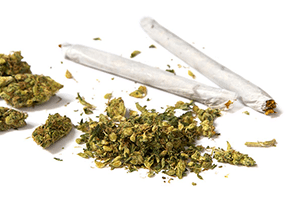Testing Challenges for Marijuana Breathalyzers
Despite the news reports and efforts over the course of this year by several companies to develop technology to detect marijuana use through breath, there remain testing challenges for marijuana breathalyzers. The legalization of marijuana by several states has probably hastened the development of these devices, as entrepreneurs can see a clear need and application for the devices by law enforcement, and even for individual use.
How likely is it that any of these efforts will result in a viable commercial product? Our hopes are high for success, as a marijuana breathalyzer would likely be a popular addition to AlcoPro’s line of alcohol and drug testing products. But the technological challenges of detecting THC in the breath are great, and making sense of the results of a marijuana breath test raises issues that are far from being resolved.
The technological challenge begins with the fact that the amount of THC that appears in a single breath is extremely small. That means that the sensors used to detect THC must be extremely sensitive. Of the three companies that we know about that are developing these devices, only one of them has been somewhat forthcoming about the technology they are using. Cannabix Technologies website discloses that it is using “high-field asymmetric waveform ion mobility spectrometry (FAIMS) and FAIMS-mass spectrometer systems (FAIMS-MS).” Hound Labs does not disclose much about their device, preferring not to divulge their proprietary technology. And neither has Lifeloc Technologies had much to say publicly about their device, for which they received a $250,000 Colorado state grant for development in 2014.
Assuming one of these companies can produce a device that can accurately measure the amount of THC in the breath, the next challenge is how to use that information. The most certain application would be for zero tolerance settings where the use of marijuana is prohibited altogether. But in a state where marijuana is legal, does knowing that a driver has a known amount of THC mean they are impaired? A few states have set legal limits for the amount of THC in drivers (5 ng/mL in Washington and Montana, 1 ng/mL in Pennsylvania); we would have to agree with the CEO of Hound Labs that these standards are completely arbitrary. Much work needs to be done to establish the relationship between the presence of THC on the breath and impaired driving.
It’s informative to look back on the decades-long development of alcohol breathalyzers, the acceptance of the use of alcohol breathalyzers by the courts, and the evolution of laws regarding drunk driving. The history of alcohol breathalyzers and laws regarding drunk driving provide a pretty good roadmap to anticipate the issues that marijuana breathalyzers will need to work through in the years ahead.
Allowing our imagination to run wild, here are our guesses for the future of marijuana breathalyzers: A workable marijuana breath test technology will evolve over the next several years to become commercially available; at some point NHTSA will jump in and help sort out how to define THC impairment, and will propose model legislation for states regarding driving while marijuana-impaired; law enforcement will breath test impaired drivers for marijuana as well as for alcohol; and schools, substance abuse treatment, and corrections will also breath test for marijuana. There is no doubt in our mind that marijuana breathalyzers and the issue of marijuana impairment is the new frontier in substance abuse testing.

